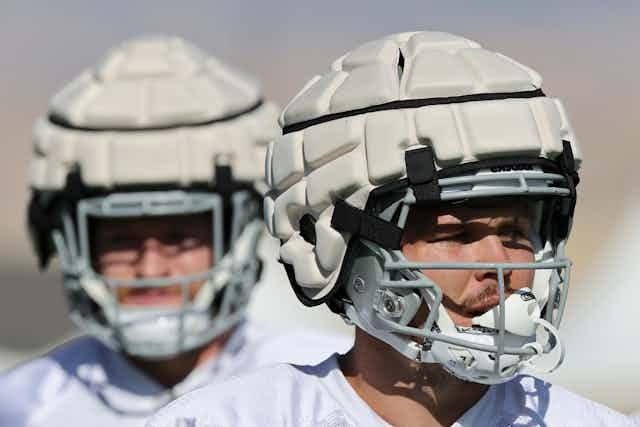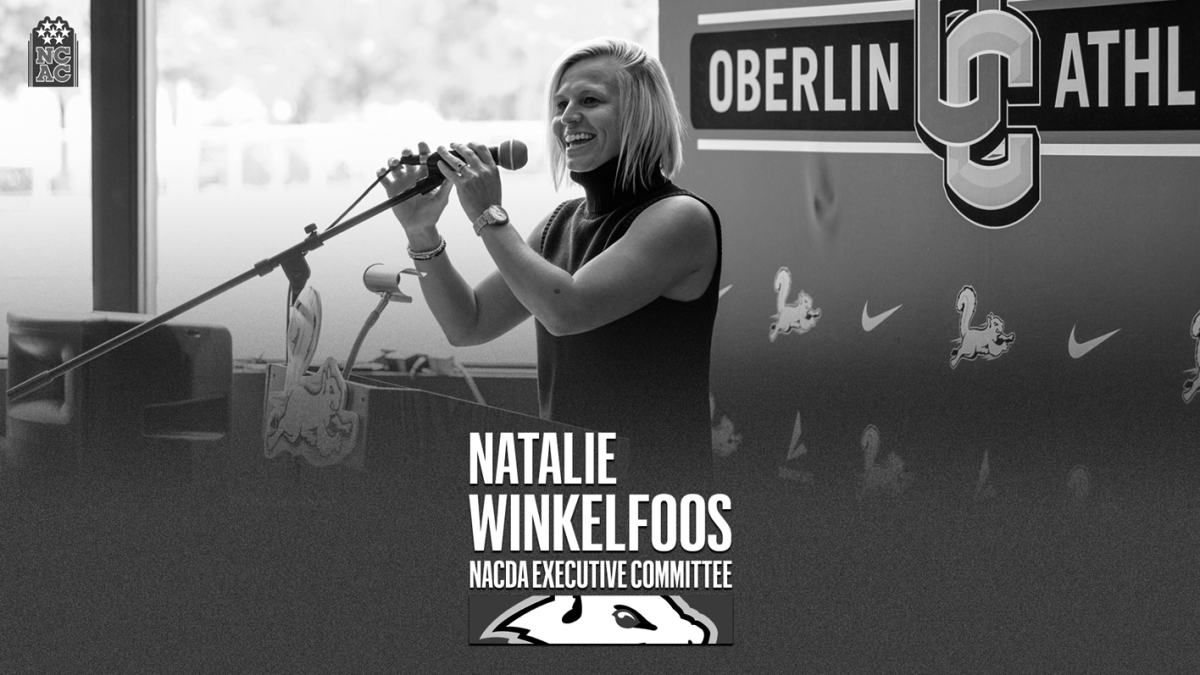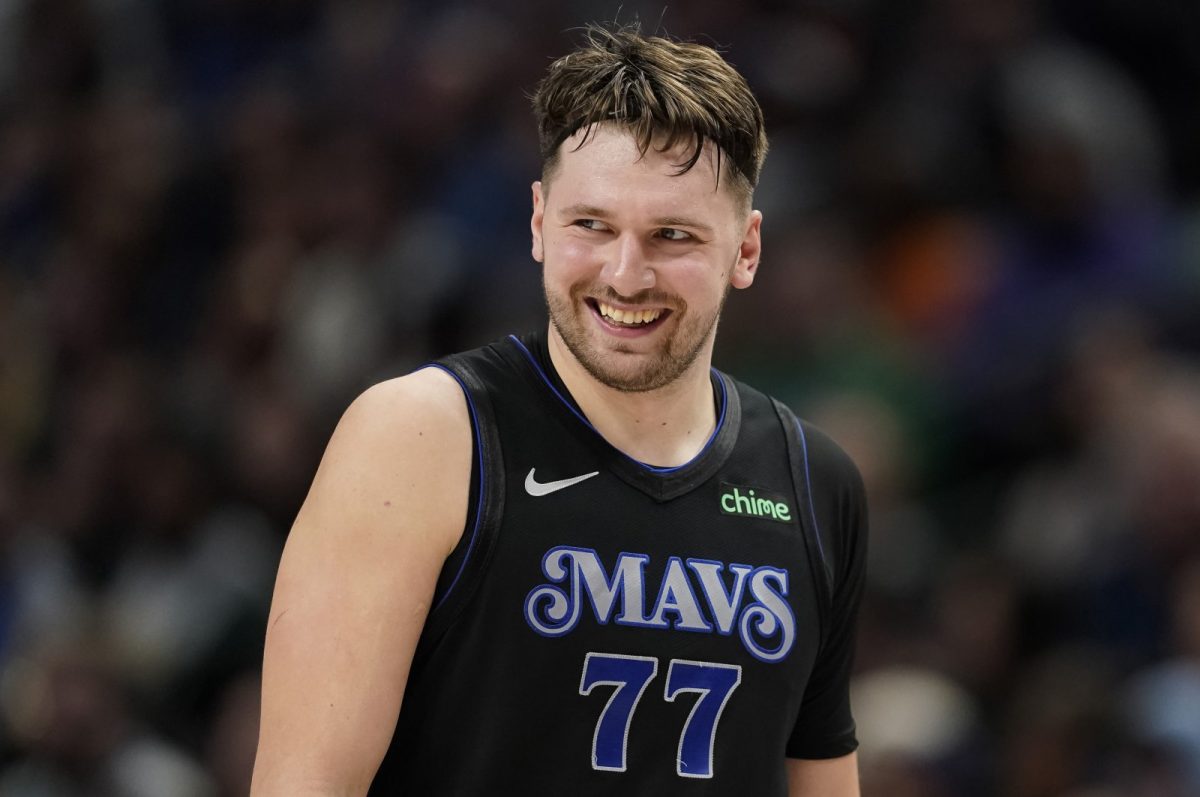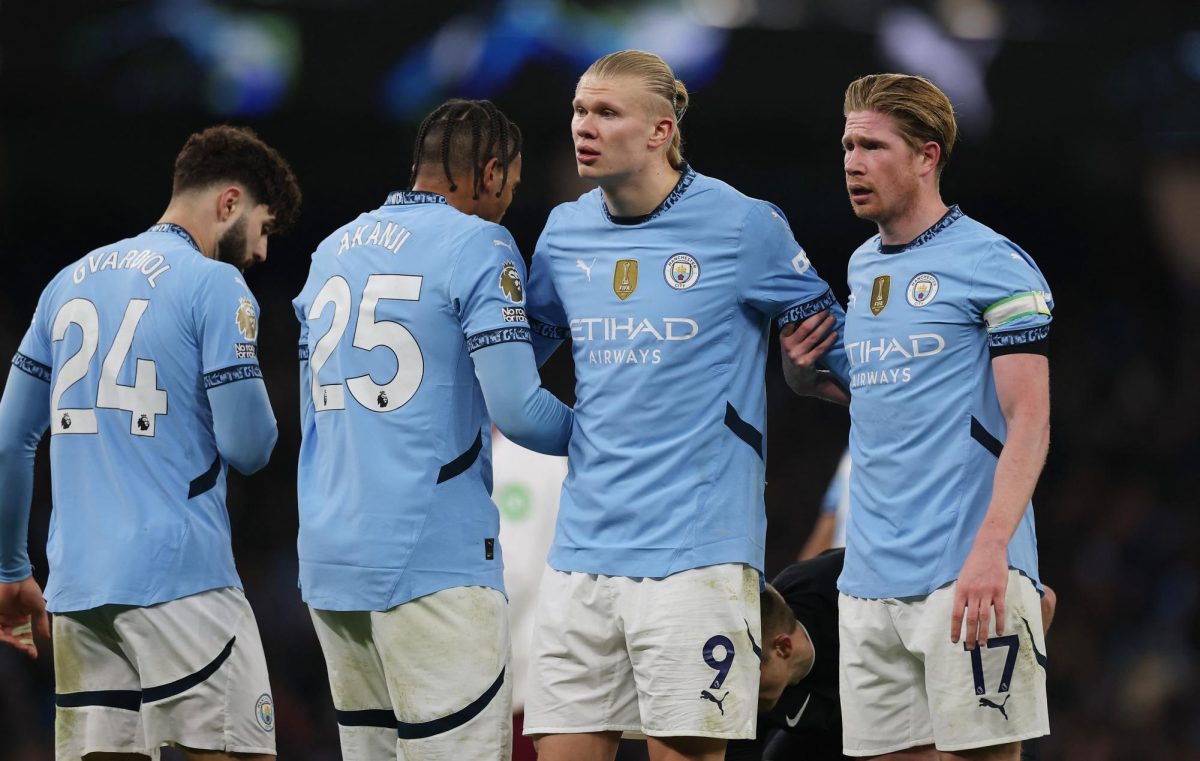As we enter the 2024–2025 NFL season, fans of the sport may notice an unfamiliar accessory on the helmets of certain players. Created in 2010, the Guardian Cap is a soft shell exterior attached to helmets to reduce the impact of potentially concussive blows. These additions were officially introduced into professional football in 2022, when offensive linemen, defensive linemen, linebackers, and tight ends — positions that regularly experience the most impact to the head — were required to wear them during preseason training camp. In 2023, the NFL moved to include running backs and fullbacks in the mandate to don caps during preseason training camp. The following year, the accessory became mandatory for all players besides quarterbacks, kickers, and punters.
According to an article from ESPN, the use of Guardian Caps have been shown to reduce impact to the head by up to 33 percent. The ones used by professional football players reduce the head acceleration response metric used to measure “brain strain” during a collision, by up to 40 percent. Now, in a groundbreaking move for player safety, the NFL is allowing Guardian Caps to be worn in games, something previously not permitted.
However, the introduction of the Guardian Cap has been seen as somewhat controversial in the eyes of both the public and the football world. The extra safety provided is a significant benefit, but many players strongly oppose the look and feeling of Guardian Caps. “Its like an extra 10 pounds on your head,” Miami Dolphins linebacker Jordyn Brooks told Pro Football Network’s Adam Beasely. “It makes [your helmet] a lot hotter [and] heavier.” In an interview with CBS, Philadelphia Eagles cornerback Darius Slay agreed with Brooks, noting that he can’t stand Guardian Caps because they impact his gameday style. “My game is part of my swag,” Slay said. “If I ain’t looking the part, I can’t feel the part. They have me looking very ugly out there with that big ol’ cap on the head.”
Despite the dissatisfaction with Guardian Caps among some NFL players, others believe the protection offered by Guardian Caps is of utmost importance. In an interview with The Athletic, Indianapolis Colts tight end Kyle Granson likened backlash against Guardian Caps to the opposition to seat belts when they were first introduced. “At one point people thought that seatbelts were so f–ing stupid,” he said. Granson took to social media to elaborate on his point, explaining that he wants to inspire kids to think that health and safety is cool. “You can do cool things out on the football field and still wear a Guardian Cap,” he said in an Instagram video. Tennessee Titans running back Tyjae Spears agrees with Granson. “You might not see [the effects of brain trauma] right now, but [you’re going] to get older,” he said in an interview with ESPN. “So, I think I’m going to protect myself.” He did jokingly agree with Darius Slay about the gear’s lack of style, noting that “the Guardian Cap might take [his] swag a few points down.”
Within the football world, the NFL is typically what sets the norm for the sport. Many of its rules trickle down into college, highschool, and youth tackle football. This phenomenon is currently occurring with Guardian Caps. After the accessory’s introduction to the professional arena in 2022, many colleges began incorporating caps into their practices in 2023. Oberlin College is no exception. As of 2024, every position on the roster aside from quarterbacks, kickers, and punters practice in Guardian Caps.
“[Guardian Caps are] a useful tool, especially for linemen, because of high frequency head impact collisions,” third-year left tackle Mike Mathis said in an interview with the Review. “[However, I don’t like] how they make the helmet feel on my head and how heavy [the caps weigh], so I understand both sides of the argument.”
Like the NFL and the NCAA, the high school football world has also begun to see more usage of Guardian Caps. The Ohio High School Athletic Association permits but does not require their use, leaving the decision to individual teams. Berea-Midpark High School, Avon Lake High School, and Walsh-Jesuit School are some of the schools mentioned that currently use caps, motivated by research indicating that most concussions occur during practice.
As the 2024–2025 football season unfolds, the growing use of Guardian Caps marks a significant shift in the sport’s approach to player safety. While the caps have sparked debate over aesthetic and comfort, their potential to reduce head injuries is undeniable. From the professional to the collegiate level, all the way down to high schools, the trend is clear: safeguarding player health is becoming a priority, even if it means sacrificing some “swag” on the field.










